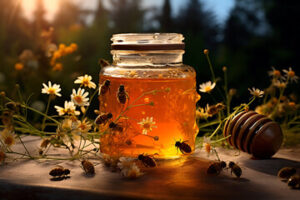Pests are rodents, birds and insects that cause damage to property or spoil food. They also spread diseases such as hantavirus, leptospirosis and salmonella.

Before hiring a pest control company, check their credentials. Look for a professional website and insurance. Insurance protects you from any liabilities and helps reduce your overhead. For professional help, contact Pest Control Ballwin MO.
Prevention is the best way to control pests and their damage. It includes preventing the entrance of pests into buildings and structures, identifying and eliminating sources of food, water, and shelter, and improving sanitation and cleaning practices. Prevention methods are more cost-effective than treatment, and they reduce health risks to people and pets caused by direct contact with pesticides.
Pests can carry disease-causing agents, physically contaminate foodstuffs with their droppings and urine, or damage products and equipment. They can also cause fires by chewing through electrical wires and insulation, or taint produce goods with their excreta. In addition, many pests destroy or taint wood and other materials, thereby increasing the risk of structural damage to buildings and structures.
While pests are a constant concern in many commercial environments, pest management aims to control them at the lowest possible level. Depending on the situation, this could mean controlling a pest to a point where its presence is acceptable or removing them completely. This goal can be accomplished by a variety of means, including biological control, habitat manipulation, modification of cultural practices, and chemical controls.
Biological controls include the use of predators, parasites, and pathogens to control pests and their damage. They can be used on their own or in combination with other control tactics, and they are generally less hazardous to humans and the environment than chemical controls. They can be especially effective for weeds and some insect infestations, such as termites and carpenter ants.
Physical controls involve the removal of pests and their eggs. They can be done by trapping or swatting, and they may include the use of baits. These can be used to control insects, worms, rodents, and some weeds. They can be as simple as placing a sticky trap under the sink to catch roaches or as complex as using nematodes such as the cockroach-eating nematode Steinernema carpocapsae, which kills pests by injecting them with bacteria that break down their body tissue.
Chemical controls can be the most costly and dangerous aspect of pest management, particularly when they are applied incorrectly. However, they can be the most effective when used in conjunction with preventative measures. A professional can recommend the best chemicals, application techniques, and timing for your situation.
Suppression
Pests such as rodents, ants and flies can cause problems for businesses such as retail or hospitality. They can damage products, interrupt work and pose health and safety risks to employees, customers and guests. Taking preventive steps and using commercial pest control techniques can help to keep pests away from business spaces.
A common method of pest control is to spray the space with chemicals that kill or repel pests. This can include aerosols, granules and liquids. This type of pest control can be effective but should be used with caution so that it does not contaminate the environment or harm people.
Another type of pest control uses natural enemies to reduce the population of unwanted organisms. This can be done by introducing more of the enemy into the area, or by genetically modifying it to make it more effective, for example, releasing sterile insects or pheromones. There is often a time lag between a change in the number of natural enemies and the effect on pest populations.
Other methods use extremes of temperature to kill pests, such as heat treatment for bedbugs or placing grown produce in cold storage containers. These kinds of controls can be costly but are often effective, especially when combined with scouting and monitoring to identify pests before they become a problem.
A more extreme method of pest control is fumigation, which involves sealing a room and pumping it with pesticide to annihilate the infestation. This is only used when prevention and suppression have not been successful, and it should only be performed by a certified professional.
Other forms of horticultural pest control include a trap crop such as zinnias to attract Japanese beetles, or nematodes to reduce populations of harmful grubs and other worms in the soil. Nematodes are microscopic worms that live in the soil, and there are both helpful and harmful varieties. To be effective, they need to be sprayed when conditions are right, such as in the evening or morning when temperatures and sunlight are low. There is also a need to apply large numbers of the nematode, which takes time to become established in the soil.
Eradication
Eradication is the ultimate goal of pest control – eliminating a species from an area or management unit. This can be accomplished by killing the species or preventing its reproduction, or both. This may involve releasing sterile organisms or spraying the site with chemicals, including biological insecticides (bacteria, viruses, and fungus). It can also include habitat manipulation and the destruction of natural predators or competitors.
Eradicating invasive species is usually a long, difficult process, with only about one-third of all efforts resulting in success. The probability of eradication success depends on the extent of the initial invasion, how quickly the outbreak is detected and controlled, and the application of critical sanitary measures. In general, eradication campaigns are more likely to succeed in man-made habitats than in (semi)-natural habitats and when the initial infestation is small. The likelihood of success also depends on the spatial scale of the eradication campaign, being higher at local than at regional or national scales. This might be because fewer resources are required to manage a local, smaller infestation and it is easier to monitor the results of the campaign so that reinvasions can be detected promptly.
In seminatural habitats, eradications of plants that were introduced as ornamentals and then escaped from cultivation were more likely to be successful than those that invaded directly from wild areas or by other pathways. In contrast, invertebrate plant pests and pathogens (viruses and bacteria) were less likely to be successfully eradicated than weeds.
The factors that appear to have the greatest influence on eradication success vary among the different categories of invasive organisms and are dependent upon how the initial outbreak is managed. For example, residence time plays a greater role in the probability of eradication for plant pathogens than for weeds. The likelihood of eradication is also significantly enhanced when the eradication is initiated before the extent of the invasion reaches a threshold, and when the pest is initially contained within an isolated area. Finally, the more strictly applied sanitary measures are, the more successful an eradication is likely to be.
Integrated Pest Management (IPM)
IPM is an interdisciplinary approach to pest control that relies on monitoring, identification, prevention and suppression tactics. The goal is to minimize the use of synthetic chemical controls. Instead, Integrated Pest Management uses environmentally sensitive methods and targets infestations when they are small and less likely to cause damage. IPM practices are useful for all kinds of plants and environments, including agriculture, commercial landscapes, military sites, urban areas, schools, homes and gardens, and wildlands (including natural, wilderness and recreational areas).
Prevention: Preventing pests from damaging or destroying crops and structures begins with creating unfavorable conditions. For example, mulching around a garden bed or crop field denies weed seeds the sunlight they need to germinate. Locating sun-loving plants where they receive full sunlight prevents fungal infections of leaves. Monitoring and assessing numbers and damage of the target organism is another important element of prevention. UC IPM online pest management guidelines offer specific, detailed information on monitoring for most major pests.
Identification: IPM programs begin with monitoring and identifying the target organism. This includes knowing its behavior, life cycle, and how it looks to the naked eye. Scouting protocols and pest sighting logs are helpful tools for this purpose. Once monitoring, identification and action thresholds indicate that pest control is needed, the best possible strategies are chosen based on effectiveness and risk to humans and non-target organisms. For instance, more targeted chemicals such as pheromones or traps are used before broadcast spraying of toxic pesticides.
Suppression: IPM also utilizes parasitoids, predators and disease organisms that occur naturally in the environment to reduce pest populations. These organisms can be far more effective than synthetic insecticides in certain situations.
A primary advantage of IPM is that it focuses on building healthy and sustainable ecosystems. It is the most environmentally sound way to manage pests for all environments. The current standard of practice is to use fewer and lower-risk pesticides, and only when needed. This greatly reduces ecological harm, human health risks and the development of resistance in organisms to synthetic chemicals.


